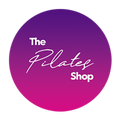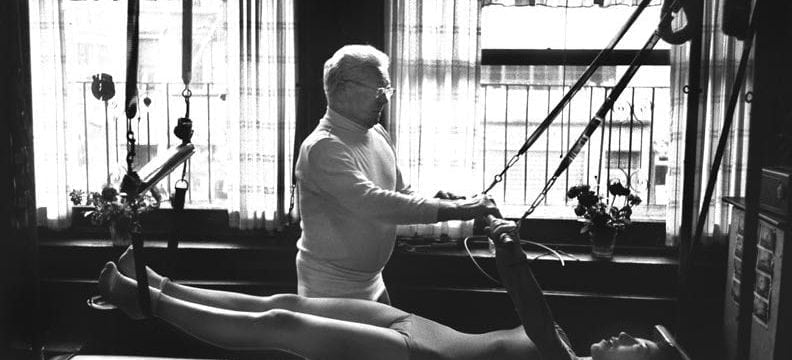Pilates, once a niche exercise regimen developed by Joseph Pilates in the early 20th century, has evolved over time to become a prominent fixture in pop culture. From its humble beginnings as a rehabilitation method for injured dancers to its widespread popularity as a mainstream fitness trend, the journey of Pilates in pop culture is one of evolution, innovation, and influence. In this exploration, we'll trace the evolution of Pilates in pop culture and examine its impact on fitness, wellness, and popular media.
1. Early Origins and Development:
Pilates first emerged in the 1920s when Joseph Pilates, a German-born fitness enthusiast, developed a series of exercises and equipment designed to rehabilitate injured soldiers during World War I. Drawing inspiration from various movement modalities, including yoga, gymnastics, and martial arts, Pilates devised a system of exercises that focused on strengthening the core, improving flexibility, and enhancing overall body awareness.

2. Rise to Prominence in Dance and Rehabilitation:
In the decades that followed, Pilates gained traction within the dance community, where it was embraced for its ability to improve strength, flexibility, and performance while preventing injuries. Professional dancers, including Martha Graham and George Balanchine, incorporated Pilates into their training routines, contributing to its reputation as a valuable tool for dancers and athletes alike.
3. Transition to Mainstream Fitness:
The 1980s marked a turning point for Pilates as it transitioned from a niche practice to a mainstream fitness trend. Fitness enthusiasts and celebrities began to embrace Pilates for its transformative effects on the body and mind, leading to a surge in popularity and demand for Pilates classes and studios. With the introduction of group mat classes and the development of specialized Pilates equipment such as the Reformer, Cadillac, and Chair, Pilates became more accessible to a wider audience, fueling its expansion into the mainstream fitness industry.
4. Celebrity Endorsements and Media Exposure:
The endorsement of Pilates by celebrities and influencers further propelled its visibility in pop culture. Hollywood A-listers, athletes, and models began touting the benefits of Pilates for achieving toned muscles, sculpted physiques, and overall well-being. Media coverage in magazines, television shows, and social media platforms showcased Pilates as a desirable fitness regimen embraced by the rich and famous, sparking curiosity and interest among the general public.

5. Integration into Popular Media:
Pilates found its way into popular media through various channels, including films, television shows, and advertising campaigns. Characters in movies and TV series were depicted practicing Pilates as part of their fitness routines, portraying it as a trendy and aspirational activity. Pilates studios and instructors became featured in reality TV shows and documentaries, offering behind-the-scenes glimpses into the world of Pilates and its transformative effects on individuals' lives.
6. Expansion into Digital and Social Media:
The advent of digital and social media platforms further expanded the reach and influence of Pilates in pop culture. Pilates instructors and studios began offering online classes, tutorials, and streaming services, making Pilates accessible to a global audience. Social media influencers and fitness enthusiasts shared their Pilates journeys on platforms like Instagram, YouTube, and TikTok, inspiring others to join the Pilates movement and experience its benefits firsthand.
7. Fusion with Other Fitness Modalities:
Pilates has also evolved through fusion with other fitness modalities, leading to the development of hybrid workouts such as Pilates Barre, Pilates Yoga, and Pilates HIIT. These hybrid workouts combine elements of Pilates with other disciplines to offer a dynamic and multifaceted fitness experience that appeals to diverse preferences and goals. By integrating Pilates with complementary modalities, instructors and practitioners continue to innovate and evolve the practice, keeping it relevant and exciting in an ever-changing fitness landscape.
8. Influence on Fashion and Lifestyle Trends:
Beyond fitness, Pilates has influenced fashion and lifestyle trends, inspiring activewear brands to design stylish and functional Pilates apparel. The sleek and streamlined aesthetic of Pilates aligns with the athleisure trend, prompting fashion designers to create versatile pieces that transition seamlessly from the studio to the street. Pilates has also permeated the wellness industry, with wellness retreats, spa resorts, and luxury hotels offering Pilates classes and experiences as part of their holistic wellness offerings.
9. Empowerment and Self-Care Movement:
At its core, Pilates embodies principles of empowerment, self-care, and holistic well-being, making it a natural fit for the broader wellness movement. As society increasingly prioritises health, fitness, and mindfulness, Pilates has emerged as a symbol of empowerment and self-care, empowering individuals to take control of their physical and mental health. With its emphasis on mindful movement, breath awareness, and body positivity, Pilates resonates with individuals seeking a holistic approach to fitness and wellness in an increasingly fast-paced and interconnected world.
10. Continued Evolution and Innovation:
As Pilates continues to evolve and adapt to the changing needs and preferences of practitioners, its influence in pop culture shows no signs of waning. From its humble beginnings as a rehabilitation method to its current status as a global fitness phenomenon, Pilates remains a testament to the power of movement, mindfulness, and community. As we look to the future, the evolution of Pilates in pop culture will undoubtedly continue, inspiring new generations to embrace its transformative potential and embark on their own Pilates journeys of discovery and empowerment.
Conclusion: Pilates as a Cultural Phenomenon
The evolution of Pilates in pop culture reflects its enduring appeal and relevance in a dynamic and ever-changing world. From its origins as a rehabilitation method to its widespread popularity as a mainstream fitness trend, Pilates has transcended boundaries of time, space, and culture to become a cultural phenomenon embraced by individuals worldwide. As Pilates continues to evolve and innovate, its influence in pop culture will continue to shape trends, inspire movements, and empower individuals on their journey to health, happiness, and holistic well-being.

